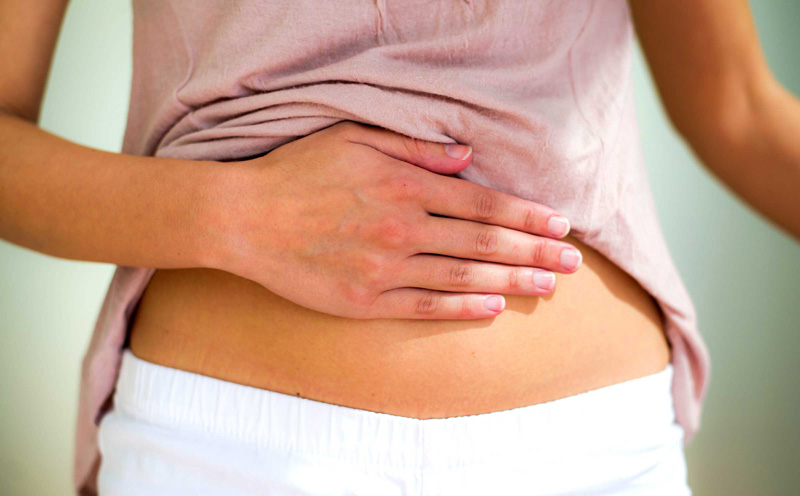Chronic Hair Fall &Amp;Amp;Amp;Amp;Amp;Amp;Amp;Amp;Amp;Amp;Amp;Amp;Amp;Amp;Amp;Amp;Amp;Amp;Amp;Amp;Amp;Amp;Amp;Amp;Amp;Amp;Amp;Amp;Amp;Amp;Amp;Amp;Amp;Amp;Amp;Amp;Amp;Amp;Amp;Amp;Amp;Amp;Amp;Amp;Amp;Amp;Amp;Amp;Amp;Amp;Amp;Amp;Amp;Amp;Amp;Amp;Amp;Amp;Amp;Amp;Amp;Amp;Amp;Amp;Amp;Amp;Amp;Amp;Amp;Amp;Amp;Amp;Amp;Amp;Amp;Amp;Amp;Amp;Amp;Amp;Amp;Amp;Amp;Amp;Amp;Amp;Amp;Amp;Amp;Amp;Amp;Amp;Amp;Amp;Amp;Amp;Amp;Amp;Amp;Amp;Amp;Amp;Amp;Amp;Amp;Amp;Amp;Amp;Amp;Amp;Amp;Amp;Amp;Amp;Amp;Amp;Amp;Amp;Amp;Amp;Amp;Amp;Amp;Amp;Amp;Amp;Amp;Amp;Amp;Amp;Amp;Amp;Amp;Amp;Amp;Amp;Amp;Amp;Amp;Amp;Amp;Amp;Amp;Amp;Amp;Amp;Amp;Amp;Amp;Amp;Amp;Amp;Amp;Amp;Amp;Amp;Amp;Amp;Amp;Amp;Amp;Amp;Amp;Amp;Amp;Amp;Amp;Amp;Amp;Amp;Amp;Amp;Amp;Amp;Amp;Amp;Amp;Amp;Amp;Amp;Amp;Amp;Amp;Amp;Amp;Amp;Amp;Amp;Amp;Amp;Amp;Amp;Amp;Amp;Amp;Amp;Amp;Amp;Amp;Amp;Amp;Amp;Amp;Amp;Amp;Amp;Amp;Amp;Amp;Amp;Amp;Amp;Amp;Amp;Amp;Amp;Amp;Amp;Amp;Amp;Amp;Amp;Amp;Amp;Amp;Amp;Amp;Amp;Amp;Amp;Amp;Amp;Amp;Amp;Amp;Amp;Amp;Amp;Amp;Amp;Amp;Amp;Amp;Amp;Amp;Amp;Amp;Amp;Amp;Amp;Amp;Amp;Amp;Amp;Amp;Amp;Amp;Amp;Amp;Amp;Amp;Amp;Amp;Amp;Amp;Amp;Amp;Amp;Amp;Amp;Amp;Amp;Amp;Amp;Amp;Amp;Amp;Amp;Amp;Amp;Amp;Amp;Amp;Amp;Amp;Amp;Amp;Amp;Amp;Amp;Amp;Amp;Amp;Amp;Amp;Amp;Amp;Amp;Amp;Amp;Amp;Amp;Amp;Amp;Amp;Amp;Amp;Amp;Amp;Amp;Amp;Amp;Amp;Amp;Amp;Amp;Amp;Amp;Amp;Amp;Amp;Amp;Amp;Amp;Amp;Amp;Amp;Amp;Amp;Amp;Amp;Amp;Amp;Amp;Amp;Amp;Amp;Amp;Amp;Amp;Amp;Amp;Amp;Amp;Amp;Amp;Amp;Amp;Amp;Amp;Amp;Amp;Amp;Amp;Amp;Amp;Amp;Amp;Amp;Amp;Amp;Amp;Amp;Amp;Amp;Amp;Amp;Amp;Amp;Amp;Amp;Amp;Amp;Amp;Amp;Amp;Amp;Amp;Amp;Amp;Amp;Amp;Amp;Amp;Amp;Amp;Amp;Amp;Amp;Amp;Amp;Amp;Amp;Amp;Amp;Amp;Amp;Amp;Amp;Amp;Amp;Amp;Amp;Amp;Amp;Amp;Amp;Amp;Amp;Amp;Amp;Amp;Amp;Amp;Amp;Amp;Amp;Amp;Amp;Amp;Amp;Amp;Amp;Amp;Amp;Amp;Amp;Amp;Amp;Amp;Amp;Amp;Amp;Amp;Amp;Amp;Amp;Amp;Amp;Amp;Amp;Amp;Amp;Amp;Amp;Amp;Amp;Amp;Amp;Amp;Amp;Amp;Amp;Amp;Amp;Amp;Amp;Amp;Amp;Amp;Amp;Amp;Amp;Amp;Amp;Amp;Amp;Amp;Amp;Amp;Amp;Amp;Amp;Amp;Amp;Amp;Amp;Amp;Amp;Amp;Amp;Amp;Amp;Amp;Amp;Amp;Amp;Amp;Amp;Amp;Amp;Amp;Amp;Amp;Amp;Amp;Amp;Amp;Amp;Amp;Amp;Amp;Amp;Amp;Amp;Amp;Amp;Amp;Amp;Amp;Amp;Amp;Amp;Amp;Amp;Amp;Amp;Amp;Amp;Amp;Amp;Amp;Amp;Amp;Amp;Amp;Amp;Amp;Amp;Amp;Amp;Amp;Amp;Amp;Amp;Amp;Amp;Amp;Amp;Amp;Amp;Amp;Amp;Amp;Amp;Amp;Amp;Amp;Amp;Amp;Amp;Amp;Amp;Amp;Amp;Amp;Amp;Amp;Amp;Amp;Amp;Amp;Amp;Amp;Amp;Amp;Amp;Amp;Amp;Amp;Amp;Amp;Amp;Amp;Amp;Amp;Amp;Amp;Amp;Amp;Amp;Amp;Amp;Amp;Amp;Amp;Amp;Amp;Amp;Amp;Amp;Amp;Amp;Amp;Amp;Amp;Amp;Amp;Amp;Amp;Amp;Amp;Amp;Amp;Amp;Amp;Amp;Amp;Amp;Amp;Amp;Amp;Amp;Amp;Amp;Amp;Amp;Amp;Amp;Amp;Amp;Amp;Amp;Amp;Amp;Amp;Amp;Amp;Amp;Amp;Amp;Amp;Amp;Amp;Amp;Amp;Amp;Amp;Amp;Amp;Amp;Amp;Amp;Amp;Amp;Amp;Amp;Amp;Amp;Amp;Amp;Amp;Amp;Amp;Amp;Amp;Amp;Amp;Amp;Amp;Amp;Amp;Amp;Amp;Amp;Amp;Amp;Amp;Amp;Amp;Amp;Amp;Amp;Amp;Amp;Amp;Amp;Amp;Amp;Amp;Amp;Amp;Amp;Amp;Amp;Amp;Amp;Amp;Amp;Amp;Amp;Amp;Amp;Amp;Amp;Amp;Amp;Amp;Amp;Amp;Amp;Amp;Amp;Amp;Amp;Amp;Amp;Amp;Amp; Dietary Practices
CHRONIC HAIR FALL & DIETARY PRACTICE
Losing hair is the biggest problem which is faced by people of different age group.
Hair fall and alopecia –
Excessive hair loss can lead to alopecia or baldness.
Type of hair loss-
A. Female pattern hair loss- when there is hair loss in front and top of the scalp.
B. Male pattern hair loss – it is present as a receding hairline.
C. Alopecia areata- It is spot baldness
D. Telogen effluvium – It is thinning of the hair
Sign of hair fall –
Generally, there are around 100,000 to 150,000 hairs on our head. Each day number of strands fall varies,On average around 100 hair falls.In order maintain the normal volume of hairs, the same rate of hair should grow to replace the lost hair. If hair loss is more than growth then it may lead to chronic hair fall.
Cause of hair fall –
1. Infections –
a) Fungal infection
b) Secondary syphilis
c) Dissecting cellulites
d) Demodex follicular
2. Trauma –
a) Traction alopecia
b) Child birth
c) Poisoning
d) Severe stress
e) Major surgery
f) Radiation to the scalp
3. Pregnancy
4. Drug
5. Chronic inflammation
6. Diabetes
Dietary practice to prevent hair loss –
Oatmeal – Oatmeal is rich in omega 3 fatty acid, zinc, iron, fibre, it helps in hair growth.
Guava – The guava contains vitamin c which prevents hair loss and also helps hair growth.
Eggs – Egg is packed with vitamin b7 that is biotin. It helps in hair growth and prevents breaking of hair.
Lentil – Lentil contains Biotin, zinc, protein iron and also folic acid. it nourishes the skin which holds hair and prevents hair loss.
Oyster – It have zinc it help to hold hair tight in root and give a good texture to the hair.
Barley – Barley is the source of vitamin E which prevents hair damage from UV ray. It helps 34 % improvement of hair.
Nuts and seeds – Nuts are considered as a good source of beta –sitosterol, saw palmetto, and tocotrienols. It enhance elasticity of hair and strengthen hair
Sweet potato – Beta-carotene in sweet potato prevents dryness of hair and stimulate gland in the scalp to produce sebum.
Lean poultry – For proper hair growth right protein in form of lean meat is required.
Cinnamon – cinnamon helps in oxygen and nutrient circulation to the hair follicle
Greek yoghurt – Yoghurt is rich in vitamin b5 (pantothenic acid), it enhances blood flow to the hair follicle and also helps in hair growth.
Sunflower seed and flax seed – sunflower and flax seed contain vitamin E ,vitamin B complex,Biotin, Potassium Selenium, Protein,zinc, Magnesium,omega 3 it nourishes hair from roots and prevents hair fall.
Avocado – it contain vitamin E, B, it works ino the cellular level, which prevents hair loss and help in hair growth.
Salmon – Salomon is the excellent source of Vitamin b12 other vitamin b complex and minerals, it solve dryness, hair loss.
Liver – liver is rich in iron which gives the body more oxygen-rich red blood, which strengthens hair follicle.
The natural food remedy should be opted to prevent hair loss than harmful cosmetics and medicine









